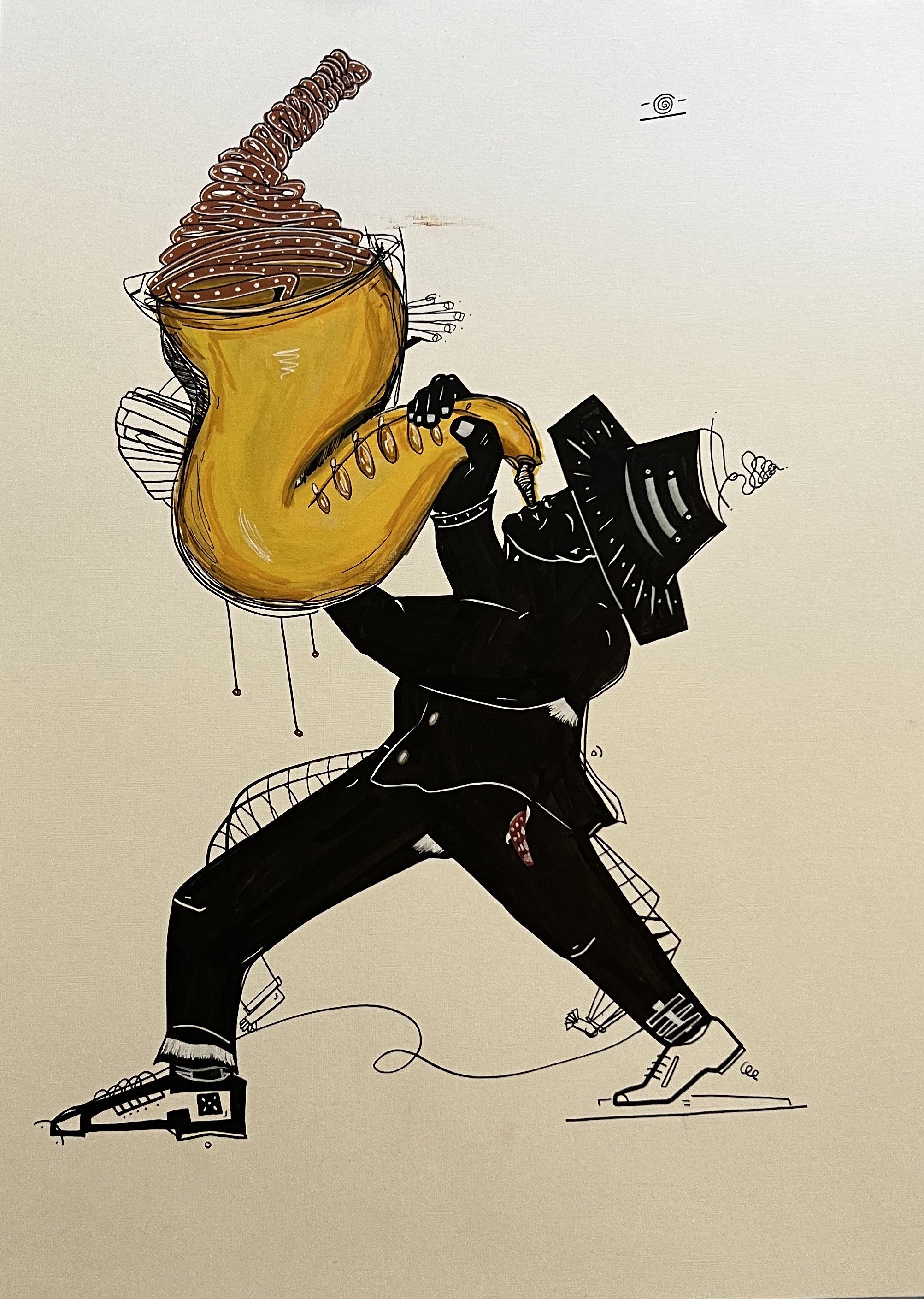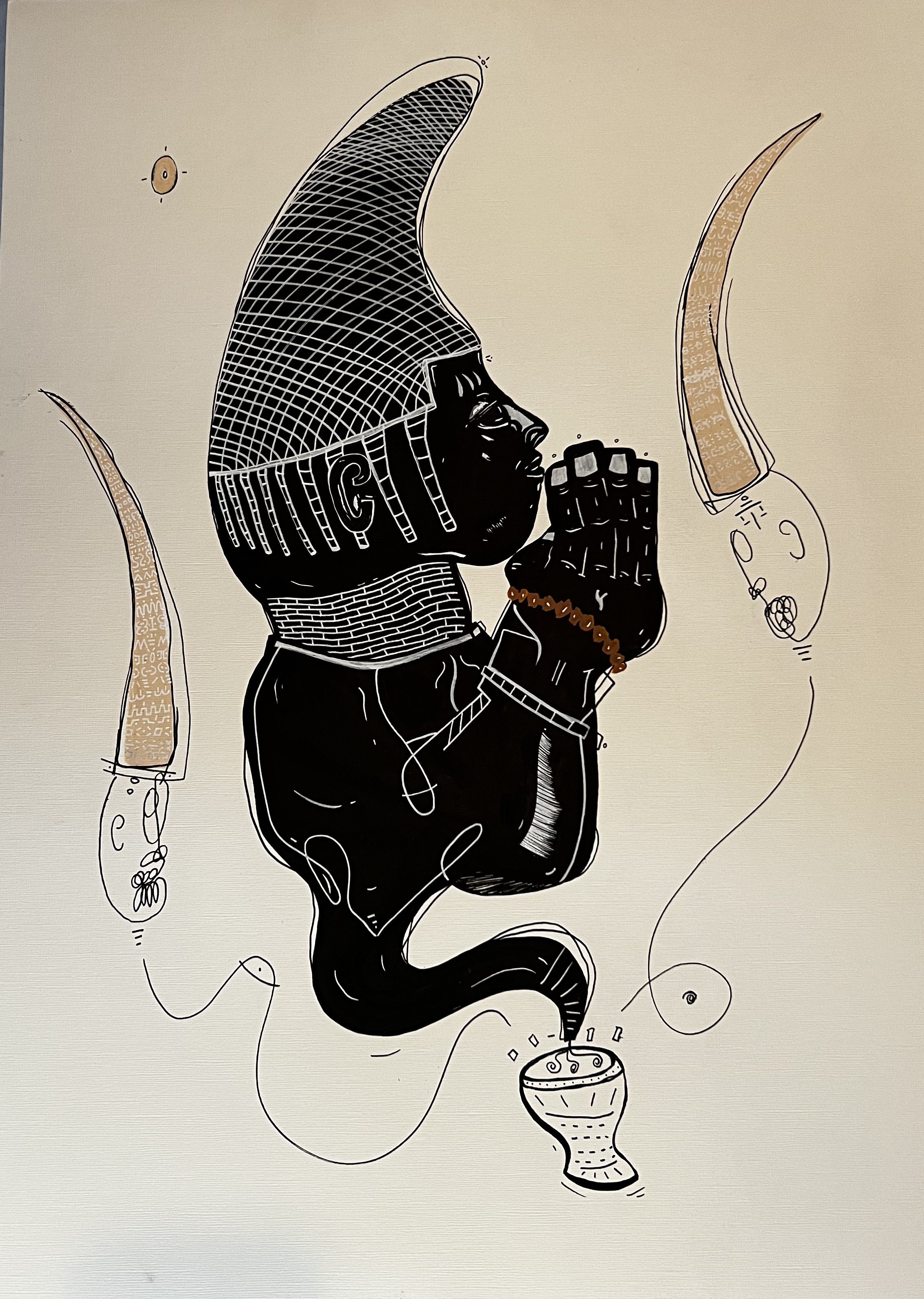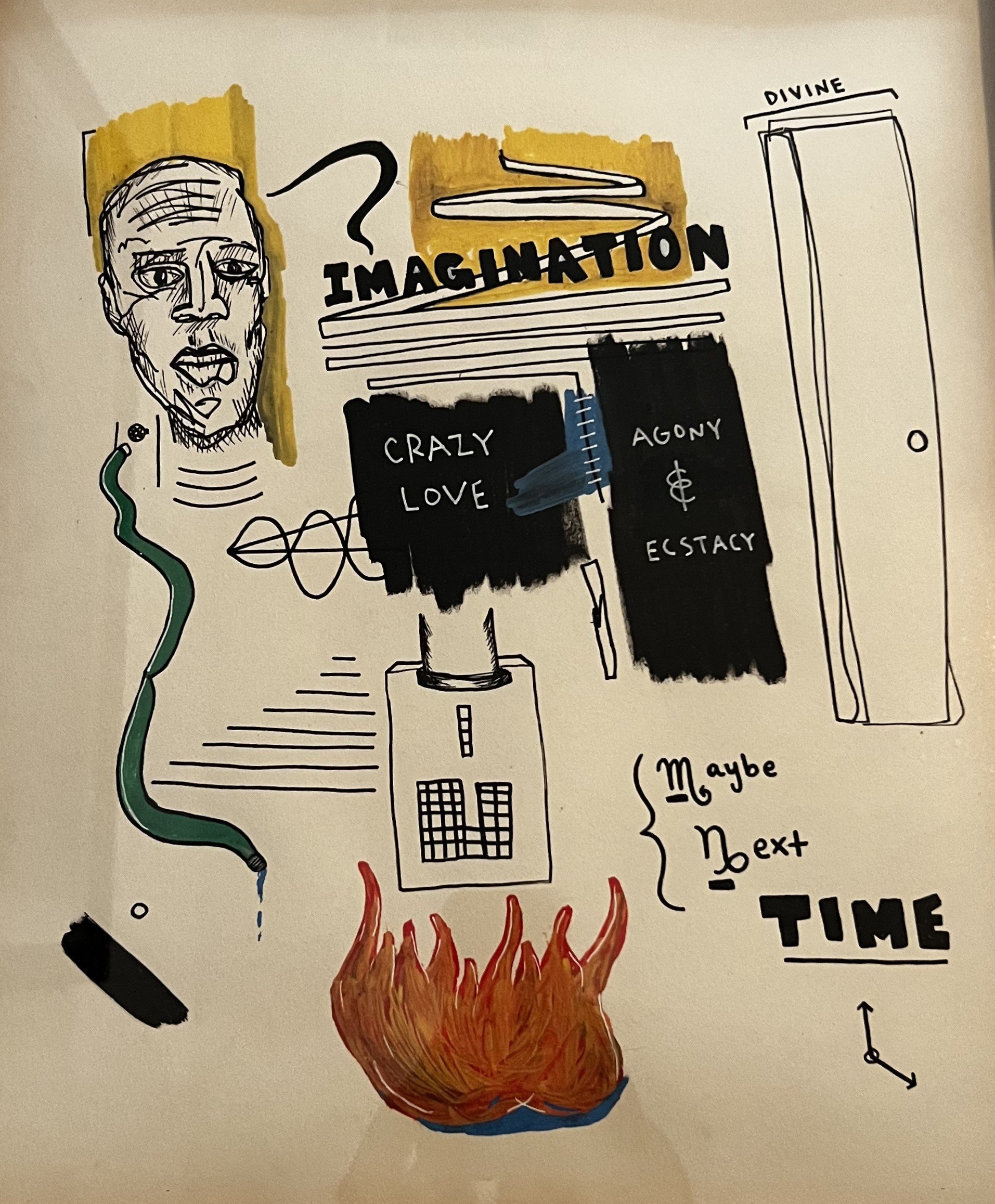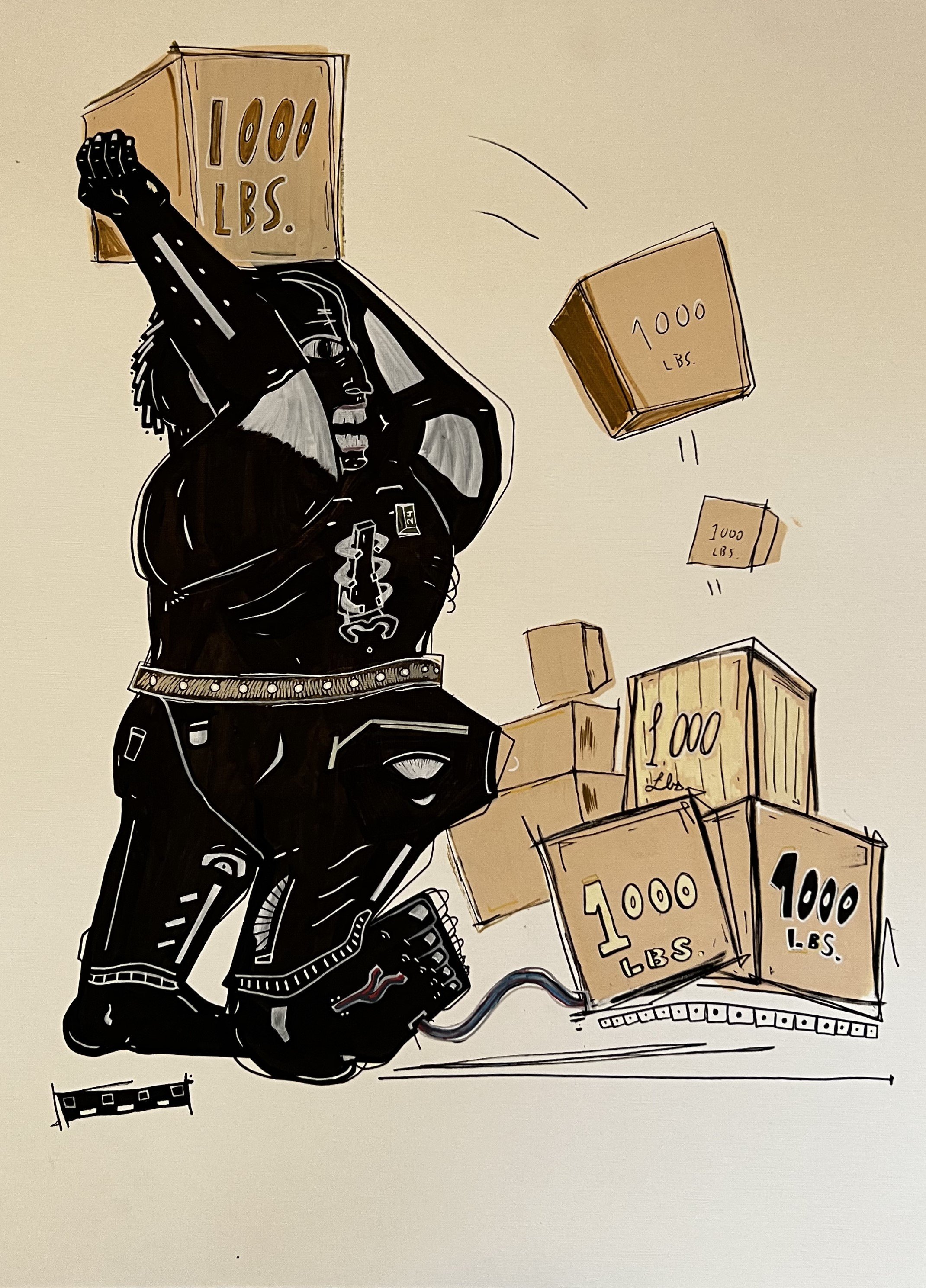Jacob Guzman, Weight Bearing, 2023. Mixed media, 24 x18 in.
Visit This Exhibit
On display August 30, 2023 - January 14, 2024
Open Wednesday – Sunday
11 AM – 4 PM CST
Accessibility
This exhibit is located throughout the Museum. It begins on the first floor, and is wheelchair accessible. An audio tour along with images of the installations on the second floor are available for those who are mobility impaired.
Liberating Black Art
in collaboration with The University of Texas at Austin
on display at the Neill-Cochran House mUseum
August 30, 2023 - January, 14, 2024
In her 1975 essay, The Role of the Black Artist, Elizabeth Catlett noted that “only the liberation of black people will make the real development of black art possible.” In keeping with Catlett’s declaration, Liberating Black Art presents artworks from the permanent collection of the Black Diaspora Archive at The University of Texas at Austin in conversation with two local, private collections. Collectively, these works highlight the distinct yet cohesive, approach of artists in using creativity as an antidote to systemic erasure and misrepresentation and as a means of celebrating the cultural legacy of people of African descent. This exhibition represents a continuum of Black aesthetics of liberation.
Visual art has long provided its own protest, commentary, and escape for people of African descent and continues to serve as a way to document and honor Black life and cultural expression. Through their work, the artists featured in Liberating Black Art exemplify traditions of resilience and creativity. Each artist brings a unique perspective to the history and personal experiences they address in works that exemplify Black narratives and speak to the human condition. Through a Black lens, the exhibition offers compelling stories, unearthed truths, and the opportunity to define what the current state of liberation is, should be, and could be.
The first floor showcases the thought-provoking works of two Austin-based artists, Adrian Armstrong and Jacob Guzman. Armstrong’s art draws inspiration from photography, portraiture, and collage to bridge the gap between the past and present. By using friends, family, and acquaintances as subjects, he draws attention to the influence of place and popular culture on individuals who are represented as liberated and free. Guzman’s paintings, mixed-media works, and sculptures capture his exploration of liberation expressed through music and spirituality. Guided by the harmonies of jazz and soul music, Guzman’s work charts a harmonious and contemplative journey into the depths of one’s soul. Together, these artworks serve as a powerful testament to the richness liberation bestows upon Black life.
The second floor features reproductions of important works representing lived experiences across the Black Diaspora. The history of Black liberation is archived in many forms, and witnessing art of the Black Diaspora is crucial to understanding Black people's nuanced struggles and extraordinary achievements. Artworks shown here address the intersections of identity, culture, and creative experimentation through space and time. The artists featured in Liberating Black Art reveal different ways Black people worldwide have responded to pressing questions about the meaning(s) and outcome(s) of liberation.
——





About the Black Diaspora Archive at ut austin:
The Black Diaspora Archive (BDA) is a collaborative project at The University of Texas at Austin, supported by LLILAS Benson Latin American Studies and Collections, Black Studies, UT Libraries, and the Office of the President.
Established in 2015 and housed at LLILAS Benson Latin American Studies and Collections, the BDA collects archival, audiovisual, digital, and artistic works related to the Black Diaspora of the Americas and Caribbean. This encompasses historical publications, contemporary records, personal papers, and rare material produced by and/or about people of African descent—including scholars, professionals, community groups, activists, and artists.



